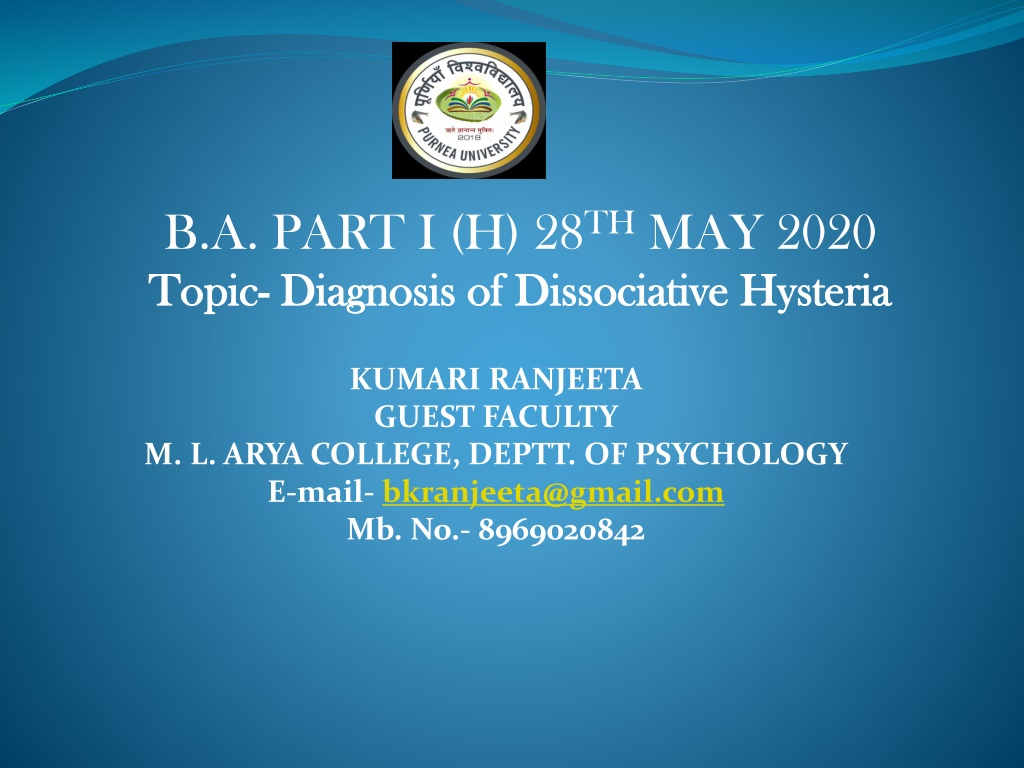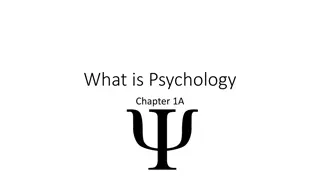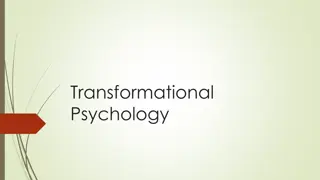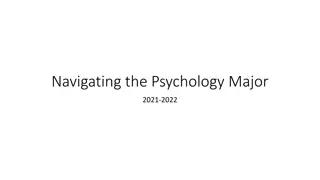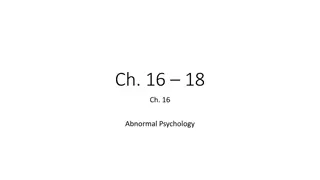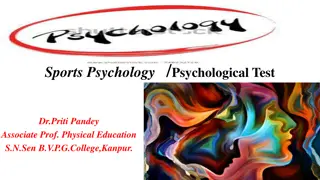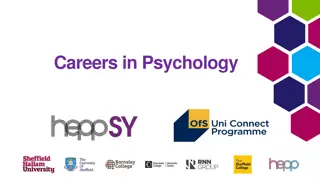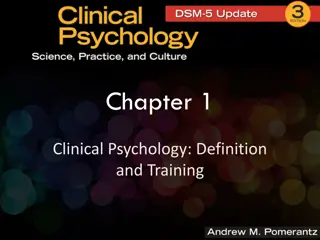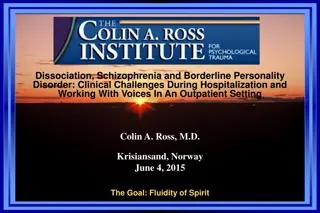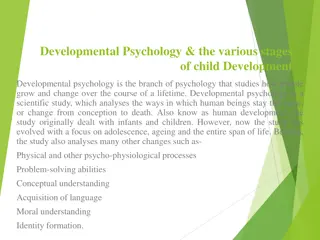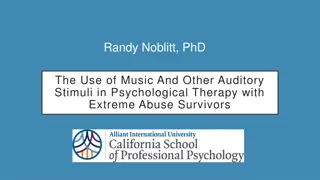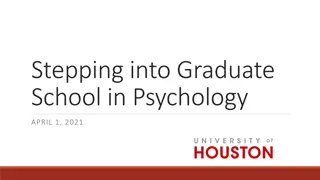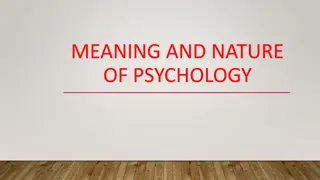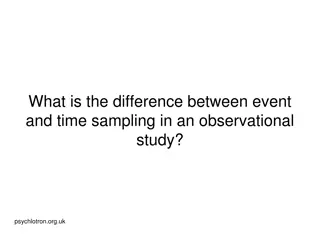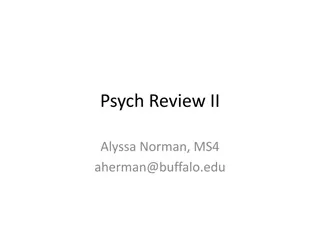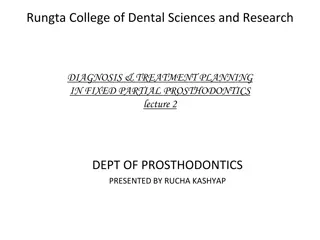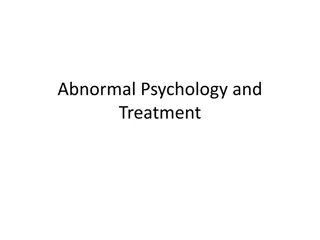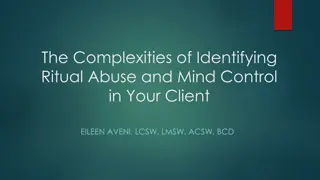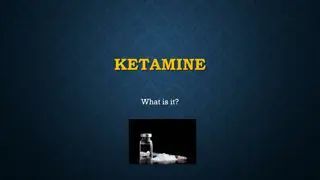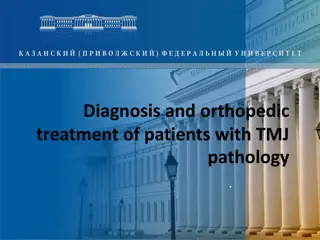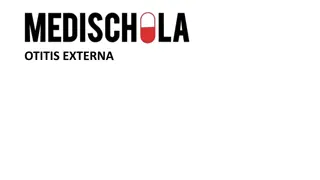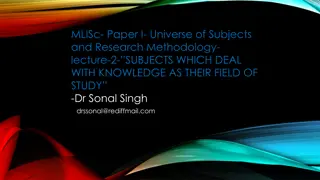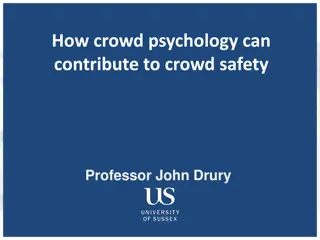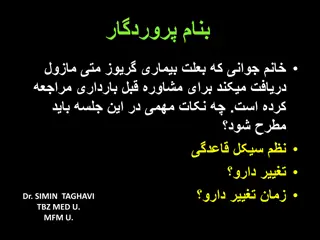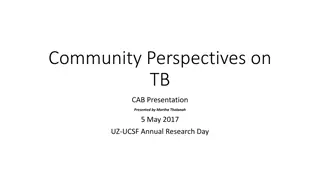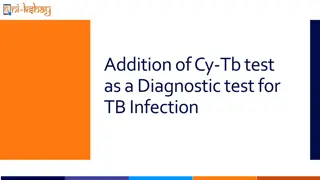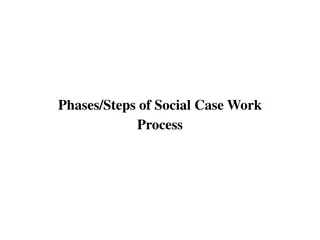Understanding Diagnosis and Treatment of Dissociative Hysteria in Psychology
The diagnosis of dissociative hysteria involves careful consideration to differentiate from organic illness. Factors such as emotional stress, time relationship with stress onset, symbolic meaning of symptoms, and course of symptoms in response to treatment play key roles in diagnosis. Psychotherapy is a cornerstone treatment, along with physical therapy and medications targeting underlying psychiatric issues. This comprehensive approach aims to address the emotional bases of symptoms and promote recovery.
Download Presentation

Please find below an Image/Link to download the presentation.
The content on the website is provided AS IS for your information and personal use only. It may not be sold, licensed, or shared on other websites without obtaining consent from the author. Download presentation by click this link. If you encounter any issues during the download, it is possible that the publisher has removed the file from their server.
E N D
Presentation Transcript
B.A. PART I (H) 28TH MAY 2020 Topic Topic- - Diagnosis of Dissociative Hysteria Diagnosis of Dissociative Hysteria KUMARI RANJEETA GUEST FACULTY M. L. ARYA COLLEGE, DEPTT. OF PSYCHOLOGY E-mail- bkranjeeta@gmail.com Mb. No.- 8969020842
28 MAY 2020 B.A. PART I (H) PAPER III, UNIT III (SYMPTOMS DISORDER) DIAGNOSIS OF DISSOCIATIVE HYSTERIA The diagnosis of hysteria may be difficult, especially as such symptoms may be associated with genuine organic illness. Consider the following points when making a diagnosis of conversion or dissociative syndromes: An organic diagnosis should be excluded on the basis of the history or subsequent investigations There should be evidence of underlying emotional stress - this often takes the nature of a conflict situation
28 MAY 2020 B.A. PART I (H) PAPER III, UNIT III (SYMPTOMS DISORDER) An appropriate time relationship between the onset of the symptom and the stress The symptom has often been experienced before, either by the patient or by a person close to the patient A history of previous transient stress reactions Also the diagnosis may be supported by: A clear symbolic meaning of the symptom itself. The course of the symptoms in response to treatment. Note that it is important to remember that physical illness may accompanied by hysterical symptoms and conversely that patients with histories of hysteria may subsequently present with organic illness.
28 MAY 2020 B.A. PART I (H) PAPER III, UNIT III (SYMPTOMS DISORDER) Psychotherapy: cornerstone of treatment for conversion disorder is psychotherapy aimed at elucidating the emotional bases of symptoms. psychotherapy can include individual or group therapy, behavioral therapy, hypnosis, biofeedback, and relaxation training. cognitive behavioral therapy (CBT) has shown the highest efficacy in treatment of pseudoseizures. behavioral interventions should focus on improving self- esteem, increasing the capacity to express emotions, and improving the ability to communicate comfortably with others
28 MAY 2020 B.A. PART I (H) PAPER III, UNIT III (SYMPTOMS DISORDER) Physical therapy: Research has shown that physical therapy can be an effective method of treatment. Physiotherapy treatment is essential in the management of people with conversion disorder to allow them to overcome their physical symptoms and prevent secondary complications, such as muscle weakness and stiffness, that may occur as a result of inactivity. Medication: Conversion disorder can also be improved through the use of medications to treat underlying psychiatric issues, such as depression and anxiety. Medications may include antidepressants, anxiolytics, or others depending on the psychiatric comorbidity.
